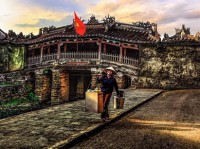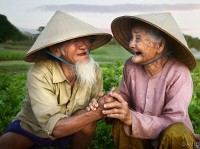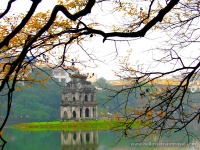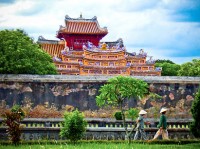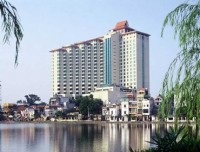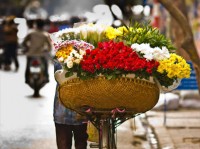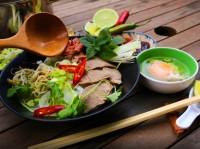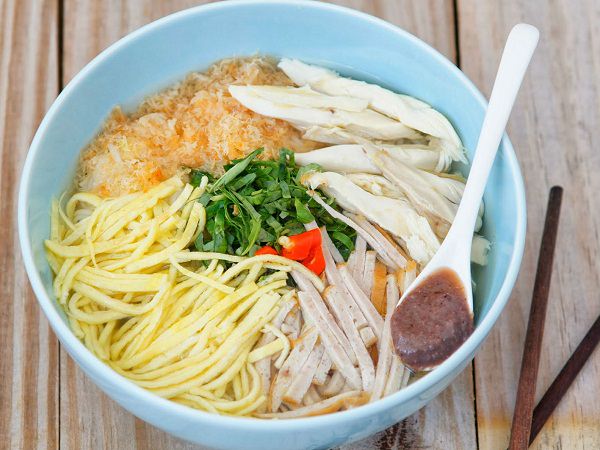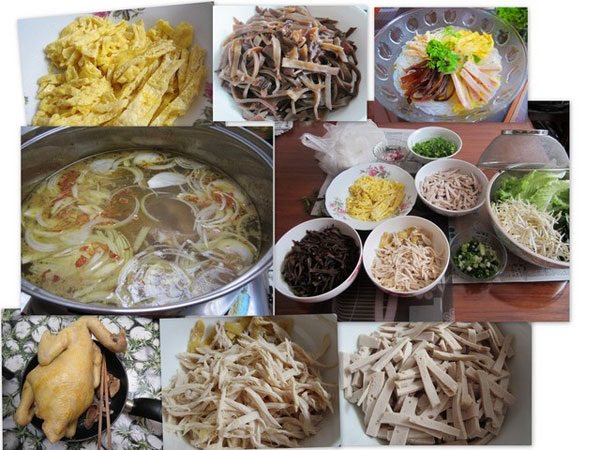Talking about the types of Bun that have delighted numerous diners and tourists, there should be a lot to mention. Outstanding among them is Bun Thang, a symbol of Hanoi’s elegant and subtle culinary.
Bun Thang has been present in the culinary culture of Hanoians since the early days. It originates from a top class soup of the ancient capital’s citizen. Making the best of traditional ingredients on Tet festival like dried shrimps, chicken, lean pork paste, salted eggs, pickled beets,… Bun Thang has vanished the feeling to be fed up with meat, fish and represented the skills, thrift to put everything in order of the Hanoi women in the past.
Bun Thang - “The flower with five glamour”
In the research on the name "the flower with five glamour" of this dish, the culinary researchers were in the opinion: The word “Thang” in Chinese means soup, thus “Bun Thang” can be understood as “Bun soused with soup.” It may be simple, but not less interesting, as only by the name, you can feel that the main part, the spirit of this meal is the soup. The key ingredient is the soup stewed with chicken or pork bones and prawn.
During the cooking process, the cook has consistently and regularly to remove the bubbles so that the soup does not turn turbid. A pot of soup meeting the requirements as to be both, clear and sweet, and also faintly redolent of prawn.
The process is also sophisticated because of choosing the ingredients, cooking and presenting to be served. It is estimated that for the Bun Thang, up to twenty types of ingredients are required. The chosen Bun is the tangle Bun and debugged into small, white noodles. The chicken has to be own-raised chicken with soft meat, torn small but still keep their skin, shining like golden leaves. Then, the lean pork paste has also to be selected carefully, sliced thin, and in the middle should be a pink color to make sure it is a good one. The shrimp paste should be sweet but not fishy, cooked frothy. At last, the dried beet torn into thread is pickled sour sweet in a yellow brown color, very eye-catching.
Even more sophisticated is the beating egg step. It has to be fried very thin, so some white wine has to be added and then whipped carefully. Afterwards, take a cotton stick to cover the whole face of the pan with oil. When you fry the egg, take caution that you have to turn the pan very quickly and steadily. Then, after being fried, the egg is cut into small, thin, but even, soft and smooth threads. Furthermore, other indispensible integrants are field mushrooms, onion flower and sliced fragrant knotweed.
All the integrants are presented eye-catching on the bowl of Bun like a flower with five glamour, and the pistil as the dark yellow egg. As the writer Vu Bang said: “Looking at the bowl of Pho brings about a picture of bold colors, whereas observing the bowl of Bun Thang gives us the feeling to enjoy the crystal clear landscape of a river, where the pure color palettes are set near to each other instead of mixed.” A latent taste arrives from…shrimp paste.
Ingredients of Bun Thang
It would be a big short-coming not to mention the spice considered as latent taste of Bun Thang… the shrimp paste. As one of the diners considered, Bun Thang without shrimp paste is like Pho without the soup. Not to leave out is the belostomatid essence, as a most subtle and excellent feature of ths type of Bun. Only with a little bit like of a toothpick head, the cinnamon flavor will adhere to the bowl of Bun, giving you an unforgettable delicious taste. It is a pity that nowadays along with the extinction of the belostomatid, this taste only exist in the memories of the ancient Hanoians, and in the desire of many diners.
Bun Thang in the past was only enjoyed on special occasion like burning votive paper on the 4th January of the lunar calendar. Nowadays, people are taking it in their daily life and does not contain all the traditional ingredients like in the past. However, with all the basic materials, it should still be a memorable taste for everyone.
(Collection)







